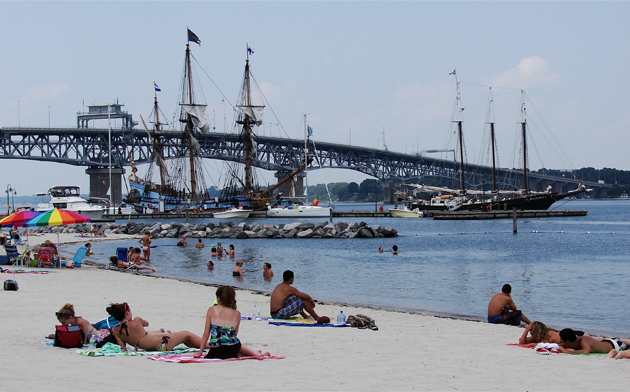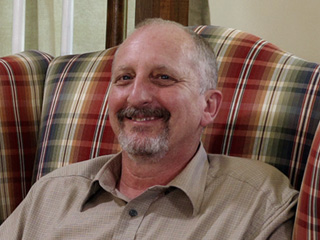We all recognize the 4th of July as Independence Day - as the day we declared our independence from England. We celebrate the Declaration of Independence has since become our nation's most cherished symbol of liberty.
"Taxation without Representation!" That was the issue that prompted our secession from England. The American colonies were forced to pay taxes to King George III without being allowed any representation in Parliament, in violation of the English Bill of Rights. Soon opposition to the taxes grew, the Sons of Liberty was formed in Massachusetts, and then groups emerged in every state. Simple acts of civil disobedience such as the Boston Tea Party and the harassing the agents who collected the tax for the King gave rise to the battle cry "
No Taxation without Representation!" As dissatisfaction grew, British troops were sent in to quell any signs of rebellion, and repeated attempts by the colonists to resolve the crisis without war proved fruitless. The colonies were not going to surrender their freedom and it was clear that their glorious stubbornness was going to lead to rebellion. As John Adams would later say:
"The Revolution was effected before the War commenced. The Revolution was in the minds and hearts of the people..... This radical change in the principles, opinions, sentiments, and affections of the people, was the real American Revolution."
The original resolution was introduced by Richard Henry Lee of Virginia on June 7, 1776, and called for the Continental Congress to declare the United States free from British rule.
On June 11, 1776, the colonies' Second Continental Congress meeting in Philadelphia formed a committee with the express purpose of drafting a document that would formally sever their ties with Great Britain. The committee included Thomas Jefferson, Benjamin Franklin, John Adams, Roger Sherman and Robert R. Livingston. It was understood that Adams, the brilliant lawyer, would craft the document, but he insisted that Jefferson should write it instead. He gave him three reasons why it had to be him: "Reason first, you are a Virginian, and a Virginian ought to appear at the head of this business. Reason second, I am obnoxious, suspected, and unpopular. You are very much otherwise. And reason third, you can write ten times better than I can." And so Thomas Jefferson wrote the Declaration.

On June 28, Jefferson's draft was read in Congress, and shortly after that, there was some debate and revision. On July 2, the Continental Congress met inside Independence Hall and formally declared independence from England, resolving that "these United Colonies... are absolved from all allegiance to the British Crown, and that all political connection between them and the State of Great Britain is, and ought to be, totally dissolved." Ironically, as the Continental Congress was declaring the independence of the American colonies, the British fleet and army were arriving in New York.
The Continental Congress continued making revisions for another day or two and on July 4, it officially adopted the final version of the Declaration of Independence.
The following day, copies were distributed and, on July 6, "The Pennsylvania Evening Post" became the first newspaper to print the exquisite document. On July 8, 1776, the first public reading of the Declaration was held in Philadelphia's Independence Square and was followed by the ringing of bells and music.
But Americans might be surprised to learn that the famous signed parchment copy of the Declaration wasn't signed by delegates to the Continental Congress until August 2, 1776. John Hancock, the president of the Continental Congress, signed the Declaration first, with a large and prominent signature. After he did so, he proclaimed; "There, King George can see that."
But independence was not won until General Cornwallis surrendered to General George Washington at Yorktown in 1781 to end the Revolutionary War. The Treaty of Paris was signed on September 3, 1783 to officially end the war and dissolve the bonds of dependence. That Treaty, which was signed by an agent of Great Britain and the American agents Benjamin Franklin, John Jay, and John Adams (the "American Peace Commissioner"), stated: "His Brittanic Majesty acknowledges the said United States, viz., New Hampshire, Massachusetts Bay, Rhode Island and Providence Plantations, Connecticut, New York, New Jersey, Pennsylvania, Delaware, Maryland, Virginia, North Carolina, South Carolina and Georgia, to be free sovereign and independent states, that he treats with them as such, and for himself, his heirs, and successors, relinquishes all claims to the government, propriety, and territorial rights of the same and every part thereof."
 Nothing speaks to the promise of America more than this image of young Americans, in the the prime of their life, lounging on the sandy beach alongside the York River, where French Ships, in 1781, once stood defiant as a blockade against Lord Corwallis's British Army completely encapsulated between these French expeditionary forces and General George Washington's entire army landward. Two replica's of those French vessels remain docked in the colonial town of Yorktown, Virginia, which is little changed from those heady days: Above. General Washington's artillery still placed upon the weathered redoubt of that Yorktown battle field: Below. photos by Stan Deatherage
Nothing speaks to the promise of America more than this image of young Americans, in the the prime of their life, lounging on the sandy beach alongside the York River, where French Ships, in 1781, once stood defiant as a blockade against Lord Corwallis's British Army completely encapsulated between these French expeditionary forces and General George Washington's entire army landward. Two replica's of those French vessels remain docked in the colonial town of Yorktown, Virginia, which is little changed from those heady days: Above. General Washington's artillery still placed upon the weathered redoubt of that Yorktown battle field: Below. photos by Stan Deatherage

The custom of celebrating the 4th of July started in Philadelphia one year after the signing of the Declaration and it eventually spread to other towns, both large and small, where the day was marked with processions, oratory, picnics, contests, games, military displays and fireworks. Observations throughout the nation became even more common at the end of the War of 1812 with Great Britain.
[banner_ads_5,H]%
We associate the Declaration of Independence with Independence Day. It has since become our nation's most cherished symbol of liberty.
Sadly, on June 24, 1826, Thomas Jefferson sent a letter to Roger C. Weightman, declining an invitation to come to Washington, D.C., to help celebrate the 50th anniversary of the Declaration of Independence. It was the last letter that Jefferson, who was gravely ill, ever wrote. In it, Jefferson says of the document: "May it be to the world, what I believe it will be ... the signal of arousing men to burst the chains ... and to assume the blessings and security of self-government. That form, which we have substituted, restores the free right to the unbounded exercise of reason and freedom of opinion. All eyes are opened, or opening, to the rights of man. ... For ourselves, let the annual return of this day forever refresh our recollections of these rights, and an undiminished devotion to them."
Thomas Jefferson died on July 4, 1826, the 50th anniversary of the Declaration of Independence, the brilliant document that defines our nation's character. A few hours later, John Adams would also pass away.
Congress established Independence Day as a holiday in 1870, and in 1938 Congress reaffirmed it as a holiday, but with full pay for federal employees. Today, communities across the nation mark this major midsummer holiday with parades, firework displays, picnics and the playing of the "The Star-Spangled Banner" and marches by John Philip Sousa.
Contrary to popular myth, the men who signed the Declaration of Independence were not great Americans. Instead, they were great Englishmen. In fact, they were as much English citizens as Americans today are American citizens. It's easy to forget that the revolutionaries in 1776 were people who took up arms against their own government.
So how is it that these men are considered patriots? Well, the truth is that their government - the British Crown and Parliament - didn't consider them patriots at all. Their government considered them to be bad guys - traitors - all of whom deserved to be hanged for treason.
And indeed, the men who signed the Declaration of Independence did so at great peril. They knew that if the colonies lost the war for independence from England, they could be punished by the Crown for the crime of high treason. And so, these brave men pledged "their lives, their fortunes, and their sacred honor" so that the colonies could state their claim of independence from England to all the world.

If our Founders had indeed been captured and tried for high treason, they certainly faced the hangman's noose. Actually it was quite worse than that. In England, the crime of high treason was punished most cruelly and barbarically. Those accused (usually found guilty by a panel of judges appointed by the King) would first be hanged almost to the point of death. Then they would be temporarily revived only to be emasculated, disemboweled, beheaded, and quartered (chopped into four pieces). Sometimes the accused would simply be hung (almost to the point of death) and then disemboweled and/or drawn-and-quartered. Their remains were often displayed in prominent places across the country, such as London Bridge. For reasons of public decency, women convicted of high treason were simply burnt at the stake.



























Just an historical note. I am not a Separatist. Not yet.